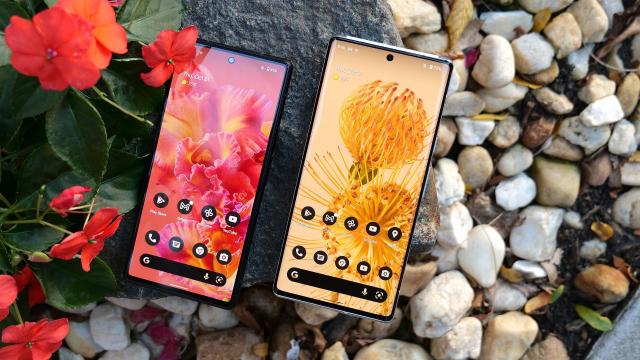Ahead of Android 12L’s arrival, Android phone users are getting a sneak peek at what could be some of the features coming to Android 13 ‘Tiramisu” next year. Based on this early look, Google’s mobile OS upgrade could bring enhancements to notifications, battery management, and the way apps handle different languages.
Before we take a deeper dive, these features were uncovered by the folks over at XDA Developers citing a “source with access to a very early Android 13 build” who shared screenshots that the site says it has a “very high level of confidence” in. That sure sounds promising, but it means any of these features could change between now and the official launch of Android 13, which is expected to be released publicly in September/October of next year.
I also want to talk about the internal codename “Tiramisu.” Android used to name its OS after dessert-themed snacks but stopped at Android 10 (maybe because Quince Tart didn’t roll off the tongue). So while the coffee-flavored Italian delicacy is referenced, the next version will almost certainly be called Android 13.
As for the new features, one of the most promising is a new runtime permission for notifications. That might not sound interesting but it suggests permission for pop-up prompts would become opt-in, and no longer automatically granted. We’re holding in our excitement because this is only XDA’s best guess about a feature that, while visible in the settings, hasn’t been tested.
Another change Google appears to be making with Android 13 is giving users the ability to set languages on a per-app basis instead of having a universal language that’s set in the main settings. The feature could be useful for frequent travellers or those who speak multiple languages. Called “Panlingual,” the feature, for now, is housed within a new “App Languages” setting.
We all struggle to keep our phones from powering down before we get to an outlet, so it’s encouraging to see Google attempt to stop power-sapping apps from chewing through your battery life. Android 13 could introduce something called “The Android Resource Economy” where apps are granted credits based on the battery level of a device. This “currency” can be traded in for performing certain tasks. Presumably, the closer a device is to crapping out, the fewer credits are granted to the apps.
And finally, Google seems to be toying with lockscreen clock so users can keep it on a single line and prevent it from expanding to two lines when there are no notifications, as it does now.
The user interface of Android 13 looks identical to the current one, though that’s to be expected considering the OS hasn’t even entered its first developer preview, no less the first of typically several betas. If history repeats itself (and it does more often than not), Android 13 will be announced early next year before entering a beta in the spring and releasing to the public in early fall.
Editor’s Note: Release dates within this article are based in the U.S., but will be updated with local Australian dates as soon as we know more.
